
Although the pace of its growth has slowed a little, Amazon remains, by a large margin, the most successful e-commerce retailer in the UK, the US, and beyond. There’s almost no sense in competing with Amazon if you’re not a massive multinational corporation. There is sense, however, in grabbing whatever slice of the Amazon pie that you can.
There are plenty of ways to make money from Amazon’s facilities. You can get involved in the marketplace, selling your own items. You can use Amazon for promotion and publicity. You can sell as a wholesaler, shift your homemade products, give customers outside Amazon a more attractive payment option, and much more.
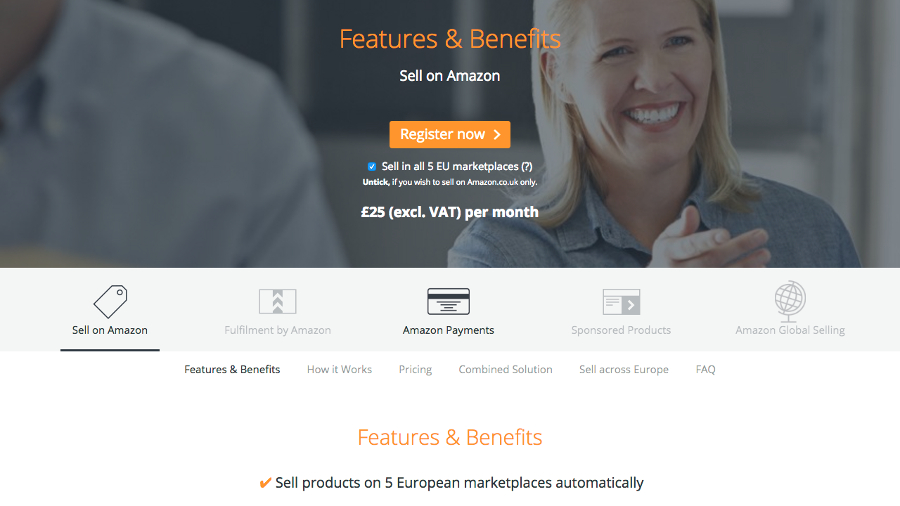
1. Become a seller
Amazon is a marketplace, but if you’ve browsed it for any length of time – and we’re sure you have – you may well have noticed that many products don’t come from Amazon at all. They come from external sellers, who pay a small fee to get their stuff listed on the site. It’s a win-win: Amazon gets to boost its product line-up and earn a little money, competition pushes prices down for the consumer, and sellers get their wares in front of a global audience of shoppers.
Amazon’s seller program costs £25 (around $30, AU$42) excluding VAT per month to sign up, and you can choose to sell on either Amazon UK alone or (if you’re willing to deal with international postage and possible customs and duty issues) on all five of Amazon’s primary European marketplaces.
You can also sell individually if you’re looking to shift fewer than 35 items per month – you’ll pay per-item rather than shelling out for a subscription fee.
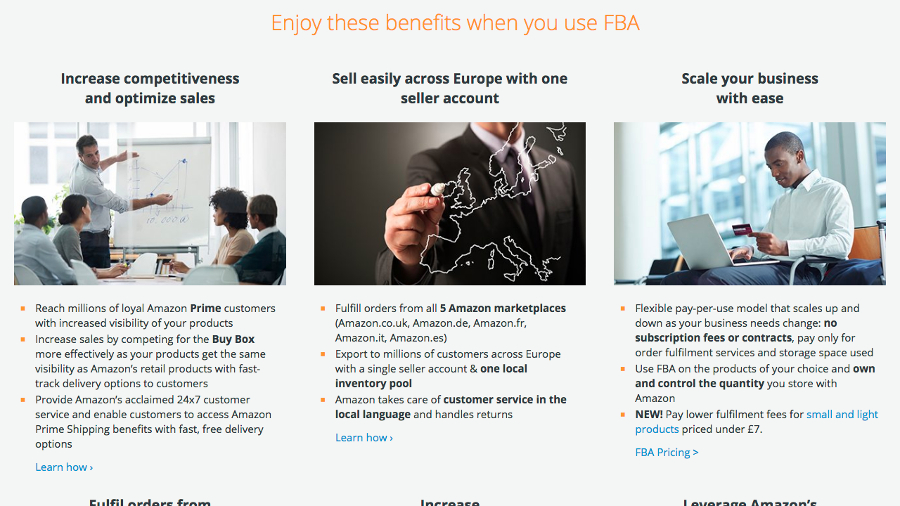
2. Use Amazon Fulfilment
If you want your life as a seller made just a little bit easier, Amazon can help with that too. Canny shopkeepers can take advantage of Amazon’s own fulfilment service, which removes a lot of the complication: Amazon will stock and store your stuff in its own warehouses and ship it out for you too.
It’s not necessarily cheap – you’ll have to shell out a stocking fee for each individual item you wish to sell, which can range from 60p to over £4.50 depending on the size, and you’ll be liable for storage fees too. That said, the fee covers you for shipping costs, and that high-end could mean a massive saving over bespoke courier fees.
Are you a pro? Subscribe to our newsletter
Sign up to the TechRadar Pro newsletter to get all the top news, opinion, features and guidance your business needs to succeed!
There’s a hidden advantage of selecting this method, too: your potential customers are likely to trust an item fulfilled by Amazon, particularly as they’ll know they won’t incur any additional shipping costs on a combined order. Chances are it’ll lead to greater sales figures.
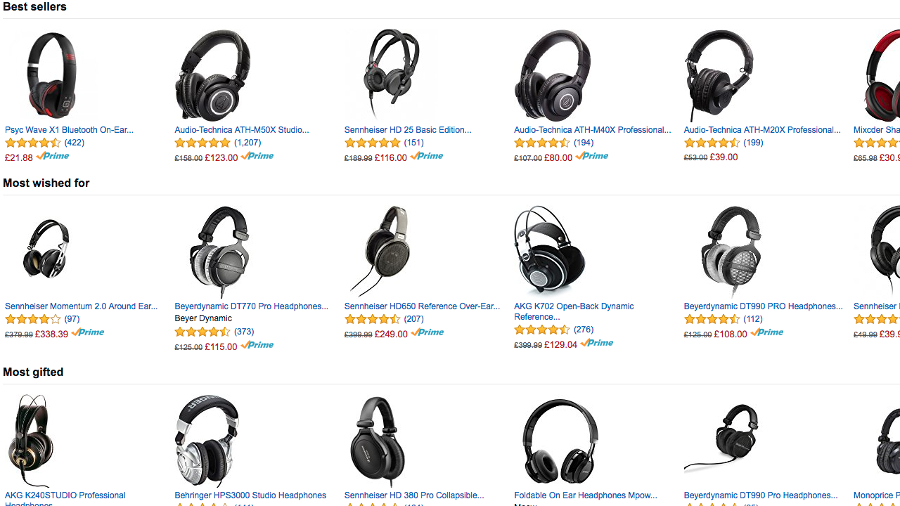
3. Advertise with sponsored products
It may seem as if our guide to making money with Amazon hasn’t deviated far from spending money thus far – and, frankly, you’re going to have to spend some more if you want your items seen by the most people. But the old adage about spending money to make money holds true; participating in Amazon’s sponsored product scheme will inevitably increase your overall sales.
If you already have a Seller Central login, it’s reasonably easy to get started as a sponsored seller, and testimonials suggest it’s a profitable exercise. Buyers don’t generally look beyond the first page or two of search results (it’s as true for Amazon as it is for Google). Boost your product up the listings and, unlike many artificial methods of visibility inflation, it’s going to work.
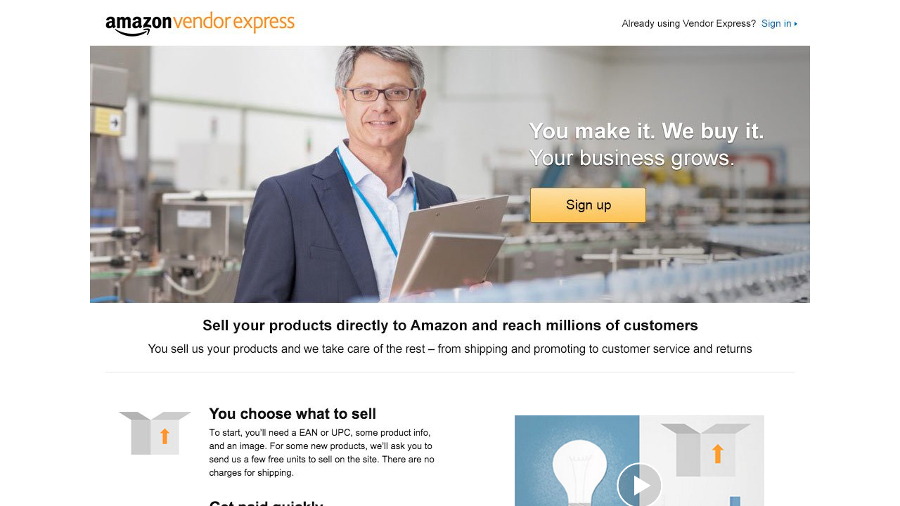
4. Sell directly to Amazon
If you’re an importer or manufacturer, Amazon’s traditional selling tools probably won’t be for you. But the company may be interested in ordering your product directly, and you don’t have to wait for them to come your way to get it done. As long as what you’re selling has a UPC or EAN, and you’ve produced the on-white product shots Amazon needs to set up your selling page, you’ll be able to sign up as a vendor. Head here to find out more.
There are a few caveats, of course. You’ll need to be prepared to supply Amazon with product at wholesale prices and volumes, with room for the company to put its own margin on top. You’ll also be required to supply a few free units up front, so that Amazon can test the waters for your product; if they never sell any, you won’t be asked for additional stock.
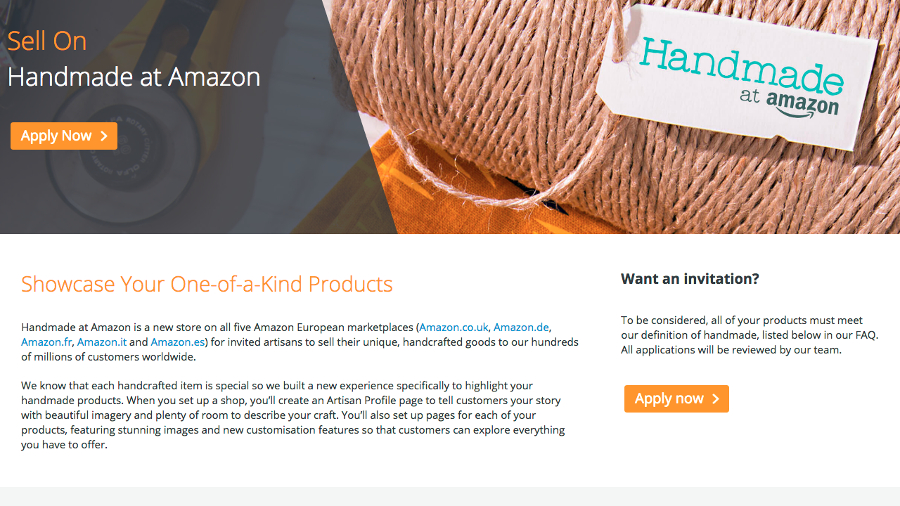
5. Market your crafts
If you’re producing things on a smaller scale, perhaps even on the level of one-off craft or art pieces, you might be more inclined towards a site like eBay, Craftsy or Folksy. But Amazon has dipped its fingers in the artisan market with Amazon Handmade and, providing your products meet the company’s tight definition of ‘handmade’, you’ll be eligible to set up your own storefront and list your unique items for free.
The catch is that you’ll need to make it through a fairly stringent approval process, first submitting an application with details of the products you’d like to market, and then waiting for an invitation from Amazon Handmade before you can get selling. You can even tie your crafty creations in with Amazon’s fulfilment program, should you wish.
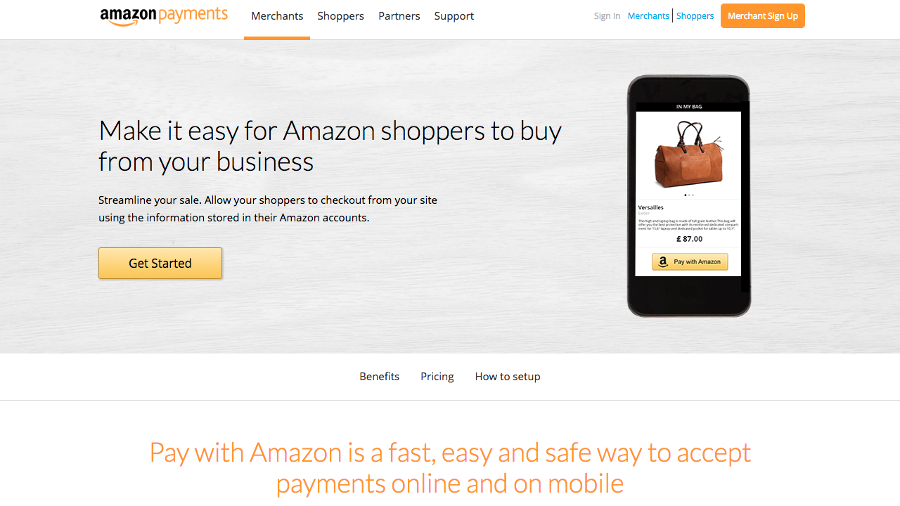
6. Collect payments
Amazon has not become the company it is today without taking a lot of online transactions, and its payment facilities are open to you even if you’re not selling directly on the site. If you’re running a business where you need to accept money, offering Amazon Payments (even alongside a service like PayPal) is something of a no-brainer.
Your potential customers won’t need to go through the longwinded process of setting up a new account, because they’ll (likely) already be registered with Amazon, which will increase conversions and therefore your profits. The system is mobile-friendly, too, and your customers won’t be taken away from your site.
Don’t worry about Amazon scraping data about your products, either. Amazon Payments is merely a way for you to facilitate transactions – precisely what you sell is of no consequence.